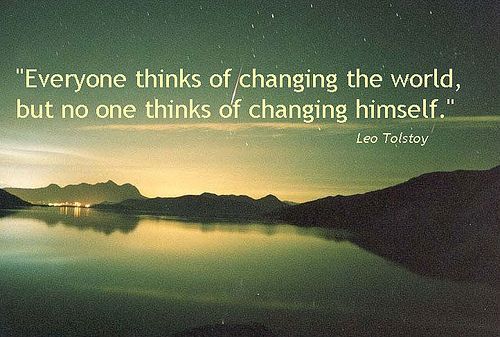
July 1, 2021
Recognizing the Merits of the Hidden Leader in Your Organization
The success of your organization is reliant, in large part, on the people you choose to cultivate.
In my book, “The Hidden Leader,” I explore the differences between traditional corporate leadership, often defined by position or title, and the less traditional path of finding and nurturing the hidden leaders in your organization. When you decouple leadership from an individual’s position or rank in the business, a great many leaders emerge.
Hidden leaders exist at all levels of a company. They are defined not by their role, but by their integrity, performance, and most of all, how they influence others to get results. Don’t make the mistake of undervaluing these individuals. In many cases, hidden leaders are the backbone of your organizational structure. They are the ones who know how to get things done. They are the individuals who others look to for reactions and guidance. They are the ones who care deeply about the mission of your organization. Pay attention to these individuals. Find them. Recognize them. Cultivate them.
How do you spot the hidden leaders in your organization? Here are a few characteristics to look for:
- They lead through relationships. Since they do not rely on authority or formal power to influence others, they develop excellent relationships. They possess a combination of effective interpersonal skills and a sense of curiosity that enables them to work across functions and leverage relationships to get results. Because they genuinely value others, they are often considered a go-to person on their team.
- They demonstrate integrity in what they do and what they say. They do what they say they will do. Not just sometimes, nearly all the time (they are human too.) This is part of what allows others to trust them. They are also willing to share their point of view and perspective, even when it's unpopular, when it is in the service of helping the business. While they will toe the company line when decisions are made, they are not yes people. The best leaders know how valuable their opinions are.
- They are customer-purposed. This is more than a distinction meaning customer focused. These are the people who go beyond being able to empathize with the needs and desires of the customer. They put themselves in the customer’s shoes and have a depth of understanding that enables them to identify issues the customer can’t see and recognize ways to help. Hidden leaders look beyond the surface and recognize potential everywhere. They understand what customers are ultimately trying to accomplish and are relentless about helping them get there.
When you look beyond a person’s title or role within your organization and observe his or her characteristics and behaviors, you will see great leaders emerge. Defining leadership based on behaviors will help you cultivate an organization with more than enough capable leaders to achieve your goals.
If you are interested in more on this topic, check out my HBR article that was the genesis for the book.
Why Aren’t People Doing What You Want Them to Do?
It’s a sad reality that frequently plays out across all levels of an organization: senior leaders and managers shake their heads in frustration because their team is not doing what they need to be doing. Meanwhile, competent employees leave their roles with unmet potential because they are fed up with being either micromanaged or under supported.
Do you ever find yourself with direct reports not doing what you expected them to be doing? Perhaps they are simply unable or unwilling to do what you expect. If that is the case, you ought to be having employment conversations, not a performance conversation. But it might not be about their ability or willingness. Perhaps it would help you to look in the mirror.
As a leader, are you establishing a clear understanding of the objectives to be accomplished by your team? Do you have an approach that allows you to be involved in what those objectives are without micromanaging how they go about achieving them? Have you created clear measures of progress that provide guidance without hand holding?
Often, we think that because we said it, referred to it, or sent it in an email (once), people will understand what you want them to do. From what I’ve seen, unmet expectations are rarely about someone not trying to do a good job or even intentionally missing the mark. Most people show up to work with the desire to do their best each day. More often, it’s about being unclear about the expectations, fully understanding what ‘good’ looks like in their performance, or not being prepared or skillful enough to do the job well. In all three cases, leaders share a responsibility in the result.
Leaders need to stop assuming their people don’t need guidance and do a better job of defining the work that needs to be done.
Here are a few key points to keep in mind as you communicate your expectations with your team:
- Share a clear goal or objective. Make sure your people understand where you are now (point A) and where you need to be (point B). Focus on the results. What outcome do you expect? What does success look like? Many leaders leave these expectations vague. Keep your objectives clear, focused, and simple.
- Decide how you will measure success. Determine the metrics you will use to measure success. What are the milestones that will reflect progress towards the objectives? Are there metrics that will portend success? What indicators will let us know we are off course?
- Report progress. Beyond metrics, seek to have meaningful conversations with your team about what is working, what isn’t, and what resources are needed to complete the task at hand. This is your chance to be involved in ‘what’ is happening without micromanaging ‘how’ your people do everything.
Communicating clear goals, deciding how you will measure success, and checking in with your team along the way will help you achieve the kind of success that gets the job done right—and helps your team reach their individual and collective potential.
Going ‘Back to Normal’ is What You Make of it
Barring some unforeseen shift with Coronavirus variants, it’s pretty easy to see that in the US, we are in the post-pandemic stage. With vaccinations widely available and COVID-19 cases declining across the country, many people are experiencing (some for months,) a return to the ‘normal’ they have only dreamed about since early 2020. Certainly, the world will never be exactly as we knew it before the pandemic. And while some changes are outside of our control as individuals, to a large degree I see this new normal as whatever you want it to be in your life. For example, if I’m not sacrificing client value, I’ve been able to re-evaluate the way I do business and how much travel I’m willing to do with videoconferencing often a suitable alternative. Business leaders can decide what their hybrid work environment will look like, and how they will collaborate with teams in different locations --now with the freedom to make up a new set of norms and standards. Some of you may be itching to get back to your pre-pandemic social activities, but if you found that you enjoyed the relative peace and quiet, there is no need to refill your calendar. Personally, I’ve shed some social activities that felt more like obligation than pleasure. This is a rare opportunity to take what you learned from the pandemic and incorporate those habits into your new normal. Resist the desire to go back to the way it used to be just because you can.
Quotable:


